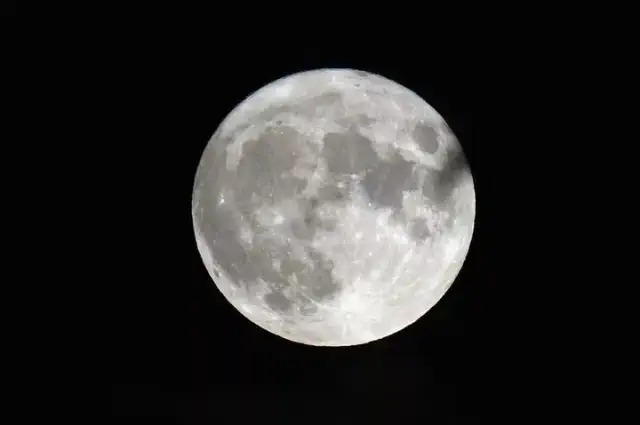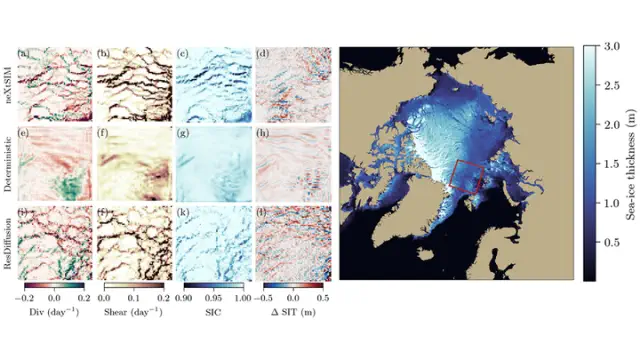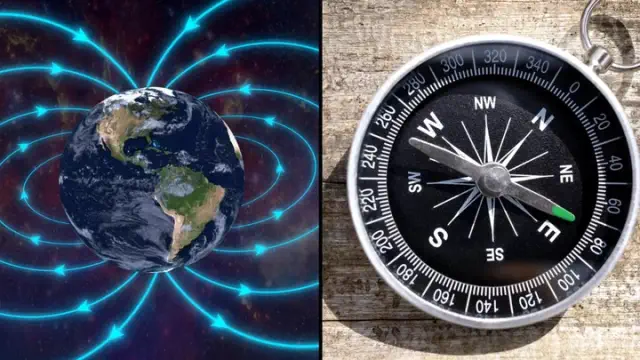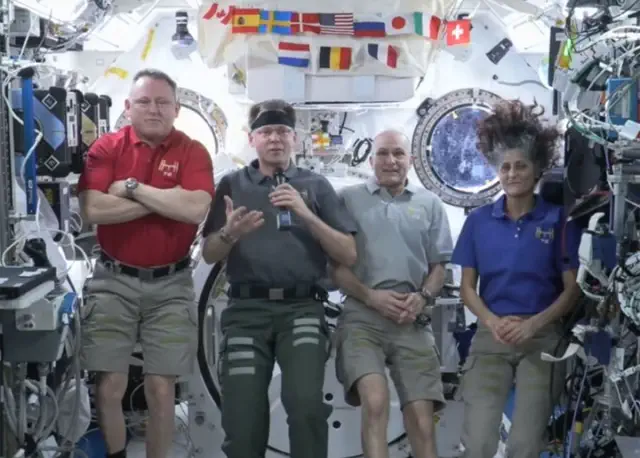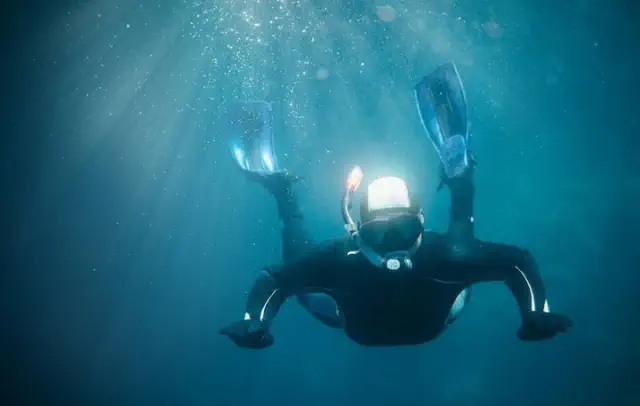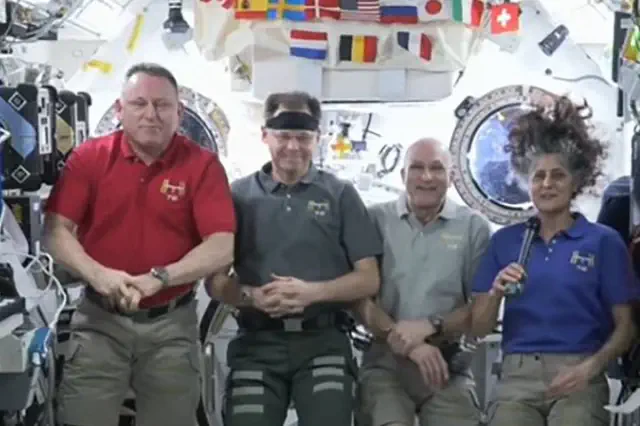Researchers discuss concerning potential consequences of a reversal in Earth's magnetic field, while NASA remains vigilant about a 'dent' in the magnetic shield.
It has the potential to inflict significant harm.
View pictures in App save up to 80% data.
There are countless factors that contribute to Earth's ability to support human life and a vast array of other organisms. However, one crucial element stands out: the planet's magnetic field.
A protective blanket surrounding Earth, it does the business and more when it comes to protecting life from nasty storms heading towards the planet.
Most of that comes from the Sun in the form of solar wind. If we didn't have the magnetic field, we'd suffer a fate similar to what Mars looks like nowadays. Cold, barren, and ultimately all the telltale signs of a planet that used to have life.
It is this magnetic field that has recently got NASA scientists on high alert following the identification of a 'dent' in the protective cover; an area known as the South Atlantic Anomaly (SAA).
At the heart of Earth's magnetic field lie the magnetic poles, located at the northern and southern extremes of the planet. These poles function as pivotal points in a never-ending circuit, allowing invisible magnetic field lines to flow continuously. The video below offers a visual representation of this phenomenon:
What would occur if it were to reverse? Would humanity manage to cope if this event took place while we inhabit the Earth?
This occurrence takes place roughly once every hundred thousand years in the timeline of Earth's development.
Reversing the magnetic field
Since the beginning of Earth as we know it, scientists reckon there has been at least 183 occasions where the planet's magnetic poles have flipped.
The timing of their flipping is completely unpredictable, occurring at intervals ranging from 10,000 years to as long as 50 million years. It's quite a vast range of time!
The most recent magnetic pole reversal occurred 780,000 years ago, an event known as the Brunhes-Matuyama reversal.
View pictures in App save up to 80% data.
The planet Earth is enveloped by a magnetic field (Getty Stock Images)
Will it turn again in the near future?
The South Atlantic Anomaly has raised concerns that we may be approaching this situation once more.
Initially identified in 1958, the South Atlantic Anomaly (SAA) is a region where the Earth's magnetic field is notably less intense compared to its surrounding areas.
Extending from South America across the southern Atlantic Ocean to Africa, this region covers a vast expanse of the Earth. Essentially, this signifies that this segment of the planet has reduced shielding from cosmic hazards compared to other areas (which also applies to satellites traversing this orbiting zone).
A 2018 study suggests that the next flip is not expected to occur in the near future.
Richard Holme from the University of Liverpool stated, "There have been discussions suggesting that we may soon face a magnetic polar reversal or excursion."
"Nonetheless, our analysis of the last two major excursion events, which occurred around 31,400 and 34,000 years ago, reveals that neither of these events bears any similarity to the current shifts in the geomagnetic field. Consequently, it seems improbable that a similar occurrence is imminent."
"Our findings indicate that the presently weakened field is expected to bounce back without the occurrence of a drastic event, making a reversal improbable."
View pictures in App save up to 80% data.
Is it possible for the north to transform into the south? (Getty Stock Images)
If the Earth's magnetic field were to flip, a phenomenon known as geomagnetic reversal, several potential impacts could occur. First, the magnetic field protects the planet from solar and cosmic radiation. A weakened or altered magnetic field during a flip might allow more radiation to reach the Earth's surface, which could affect electronic systems and increase radiation exposure for living organisms. Additionally, navigational systems that rely on magnetic compasses might be thrown off, creating challenges for wildlife that depend on magnetic cues for migration. The flip could also influence atmospheric conditions, possibly leading to changes in weather patterns. However, it's important to note that geomagnetic reversals are natural processes that have occurred many times throughout Earth's history, and life has persisted through these events. While there may be some short-term disruptions, the long-term effects are still a subject of scientific study.
This would be quite troubling news, as it would lead to significant changes in our way of life.
Jean-Pierre Valet, a geomagnetic reversal researcher at the Institute of Earth Physics in Paris, stated, "One of the most significant effects observed during pole reversals is a substantial reduction in the overall intensity of the magnetic field."
In other terms, we would face a significant reduction in the overall shielding provided by the magnetic field.
Considering that the reversal process spans from 1,000 to 10,000 years, this duration would likely result in considerable losses over an extended period.
View pictures in App save up to 80% data.
The Earth's magnetic field (Getty Stock Images / NASA)
Monika Korte, the scientific director of the Niemegk Geomagnetic Observatory at GFZ Potsdam in Germany, explained, "The transition is not abrupt; instead, it unfolds gradually. Initially, the magnetic field's strength diminishes, likely becoming more intricate and potentially exhibiting multiple poles for a period. Eventually, it regains strength and realigns in the opposite direction."
During this 1,000 to 10,000-year period, humans may find themselves at their most susceptible, possibly experiencing heightened impacts from solar storms that could adversely affect us on Earth, leading to a rise in skin cancer incidents.
Regarding the possibility of it being an extinction-level event, scientists remain uncertain, with many expressing skepticism. Korte elaborated: "Even if the magnetic field weakens considerably, the atmosphere protects us from radiation at the Earth's surface. Just as we cannot perceive or sense the geomagnetic field at present, we are unlikely to detect any substantial changes during a reversal."
Although we may not face extinction from the perils of outer space, our technology would suffer greatly. Satellites could be disabled, GPS systems would be inoperable, and widespread power failures could occur worldwide.
Such occurrences could severely impact life on our planet, interfering with food supply, healthcare systems, international transportation, and internet connectivity. The silver lining is that these changes unfold slowly, allowing humanity the opportunity to respond as challenges emerge.

